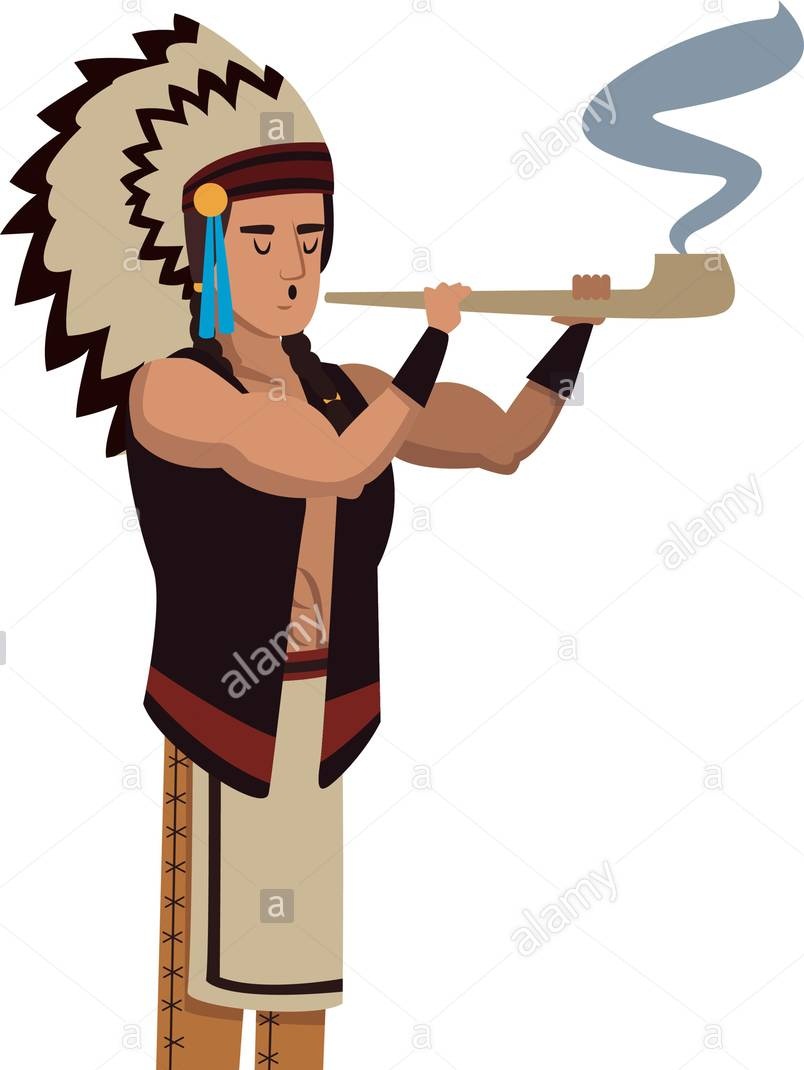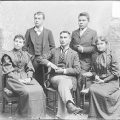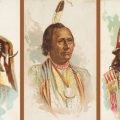
In 2011, the Altria Group, the parent company of the tobacco company Philip Morris, released a white paper urging the state of New York to clamp down on tax-free cigarettes manufactured on Indian land. Indian tribes responded by announcing that they would no longer buy famous brand cigarettes manufactured by Philip Morris (Altria), Reynolds, American and Lorillard. Instead they would manufacture and sell their own brands of cigarettes. This year, the Big Tobacco Companies, using their allies in the state and federal governments, are continuing their battle against Indian tobacco, not to reduce Indian smoking, but to increase the consumption of Big Tobacco products. With this in mind, let’s take a look at American Indians and tobacco.
One of the common sayings in Indian country is that when our ancestors first gave tobacco to the European invaders, they knew it was going to kill them, they just didn’t think it would take this long.
The use of tobacco today, for smoking as well as other uses, is a global phenomenon, and a global health concern. Tobacco, however, is a plant which originated in the Americas and which was first used in a variety of ways by American Indians. Most importantly tobacco was, and continues to be, an integral part of Native American spirituality. The history of tobacco is partially a history of American Indians.
First, some information about the plant. Tobacco’s genus, Nicotiana, contains 64 species. Today, the most frequently used tobaccos are Nicotiana tabacum (tall, annual, broad leafed plant) and Nicotiana rustica.
While tobacco grows wild in many parts of the Americas, the archaeological evidence suggests that Indian people in the Andes region of South America began to domesticate and cultivate tobacco about 7,000 years ago. The practice of growing tobacco as a crop then spread north into the tribal traditions of what is now the United States and Canada and also out to the Caribbean Islands. Shortly after the beginning of the European invasion in 1492, the use and cultivation of tobacco began to spread to other parts of the planet.
Tobacco can be used by humans in many different ways: it can be sniffed, chewed, eaten, smeared on the skin, drunk, used in eye drops and enemas, and smoked. Smoking is the quickest way of getting the drug into the blood stream other than using a hypodermic needle. Taken in small doses, tobacco has a mild effect on those who use it. However, taken in large doses it can produce hallucinations, trances, and death.
Smoking is an unusual way of ingesting a drug. At the time of the European invasion in the 1500s, smoking was found only in the Americas and in a few parts of Africa. Europeans were unfamiliar with this activity and were, at times, amazed when they encountered it.
Tobacco was traditionally used by nearly all of the tribes of North America and the most common way of using tobacco was to smoke it in a pipe. Indians used pipes made from various materials in a variety of shapes. The most recognized is the Plains Indian “peace” pipe with its stone bowl and long wooden stem. The bowl of the “peace” pipe is often in an elbow shape or a T-shape.
The people whom archaeologists call Basketmaker in what is now the American Southwest were using a tube-like pipe about 3,500 years ago. For their smoking mixture they used wild tobacco (Nicotiana rustica) which was probably mixed with other materials. In a similar fashion, the Indian people around the Great Lakes area about 3,000 years ago were using tubular-shaped pipes for smoking tobacco. The pipes are flared on the tobacco end and narrowed on the mouth end.
While some pipes are left plain, others are elaborately carved. The designs can range from abstract patterns to realistic animal and human effigies. In some instances the animal effigies represent the guardian spirits of the pipe’s owner. Human heads, which are often carved so that they face the smoker, sometimes represent an actual deceased individual and are smoked to facilitate spiritual communication with that person.
One interesting historical side note is the collection of effigy pipes of Toussaint Charbonneau, the guide for Lewis and Clark’s Corps of Discovery expedition. Charbonneau collected pipes which realistically portrayed people in erotic situations.
The Indian people in the eastern part of the United States frequently made pipes from clay. It was this clay pipe which the Europeans copied when they began to smoke tobacco.
In addition to using stone and clay for making pipes, Indian also made pipes from wood, bone, and antler.
Traditionally, the material smoked in the pipes was a mixture of tobacco and other plant materials. The Algonquian term “kinnekenick,” which means “mixture” was often used to describe this mixture of smoking materials.
While smoking could be a social event or a solitary undertaking, the act of smoking always involved some ritual. When the pipe was first lit, smoke would be offered to the directions: four directions in some traditions, six in others, and often seven.
Often pipes were individual pipes: that is, they were privately owned. An individual pipe could be used ceremonially to aid in the owner’s personal spiritual quest or the owner could use the pipe to help other people. In addition, an individual pipe might be used for recreational smoking. When the owner of the pipe died, the pipe was either buried with the owner’s body or it was destroyed.
Sometimes pipes were communally owned: that is, they were a part of a bundle of spiritual objects. These pipes were used only ceremonially and were used to spiritually help the people.
Today, pipes are still commonly used by American Indian people. Many of the old bundles and their pipes still play an important role in the spiritual life of the people. Many individuals also have pipes and, as “pipe carriers,” they are often asked to conduct spiritual ceremonies.
Note: for many traditional elders, photographing sacred pipes is offensive and therefore no photographs of pipes have been included in this essay.
Many Indian tribes traditionally cultivated tobacco, but cultivated tobacco was not always used for smoking. The Crow, a Northern Plains tribe, have a Tobacco Society (both men and women are members) which plants the sacred tobacco every spring and every fall they harvest it. In the spring, the members meet to discuss their dreams which give them instructions on the site for planting the seeds. The tobacco (Nicotiana multivalvis) raised by the Crow Tobacco Society was considered a holy plant associated with the stars and was not smoked. Some stories say that tobacco was given to the people at the time of creation: that Morning Star transformed himself from human into the tobacco plant in order to overcome their enemies. Other stories indicate that tobacco was the personal medicine of No Vitals, the chief who led the Crow away from the Hidatsa. For the Crow, their destiny was linked to tobacco.
Tobacco is still used by American Indians as a spiritual offering. When asking the advice of an elder, for example, it is customary to give the elder tobacco. In gathering wild plants for ceremonial use, it is customary to leave a small offering of tobacco for the spirits of the plants. In preparing the fire for the sweat lodge, tobacco offerings are given to the fire. Ceremonially, tobacco is still an important part of Native American spirituality.
In the United States today, tobacco use-primarily cigarettes and chewing tobacco-is extremely high on Indian reservations and among Indian populations in urban areas. A report released in 2012 by the U.S. Surgeon General showed that American Indian youth (age group 12-17) and young adults (age group 18-25) are more likely to smoke tobacco than any other ethnic group. According to the report, nearly 50% of young adult Indians smoke.
Interestingly enough, there seems to be a correlation between Indian casinos and smoking: a study by the Institute on Poverty at the University of Wisconsin-Madison found that casinos reduce the probability of smoking by 9.6%.
Tobacco use is accompanied by the usual tobacco-related health problems. In many areas, the elders are attempting to tell the young people that tobacco should be used only in ceremonial context and not for recreation.




Leave a Reply